Macau is a city that offers visitors the best of both worlds. It is a melting pot of eastern and western cultures, opulent casinos, luxurious hotels, and also beautifully historic architecture from years gone by. This city’s roots take us back to when Portugal took over the region and contributed to Macau’s rich culture. One such cultural aspect is Catholicism which is very much displayed in the churches that are well-celebrated, respected, and preserved up to today. Additionally, these churches are easily accessible via public transportation! No matter your beliefs, visiting any of these Catholic churches will definitely make your trip to Macau that much richer! For visitors who would like to attend mass, do note that they are held in Cantonese (C), Portuguese (P), and English (E). Some even offer masses spoken in Tagalog and Korean.
Chapel of St. Francis Xavier
(See featured image above)
The chapel–exhibiting a baroque-style architecture–was built in 1928 and houses some of the most sacred relics of Christian Asia. It stands behind the monument commemorating the victory of Macau over sea pirates in 1910 since the area was the site of a grand battle at that time. The Chapel of St. Francis Xavier is the preferred praying venue for Christians living in Coloane village. The church is one of the most striking because of its exterior colors: painted in cream, bright yellow, and blue, it allows for cool photos and it’s a very popular background monument amongst couples for pre-wedding and romantic shootings.
Sunday Mass: 10:00 (C)
Bus routes nearby: 15, 21A, 26, 26A, N3
Opening hours: 9:30am–5:30pm
Chapel of St. Francis Xavier Rua do Caetano/Largo Eduardo Marques, Coloane, +853 2888 2128
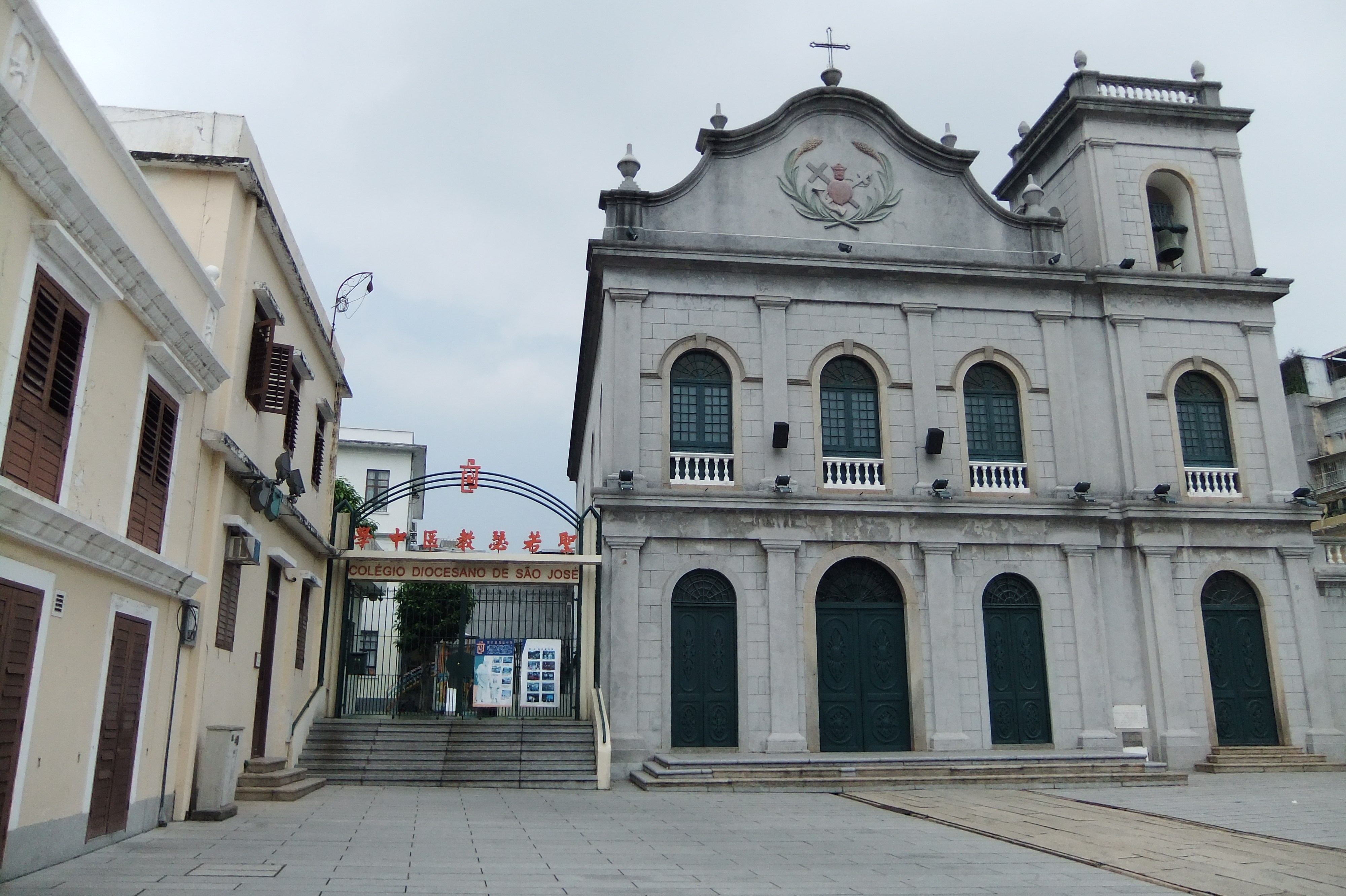
St. Lazarus’ Church
Located in an old colonial-style neighborhood, St. Lazarus is one of the oldest churches in Macau. It was established during the 15th century and was completely rebuilt in 1885. The Cross of Hope in the forecourt was retained from the original chapel. This church is very popular to hold Catholic weddings but also for pre-wedding shoots in the courtyard. St. Lazarus Church sits right next to Albergue SCM and features a series of cool things to see and do nearby.
Weekday Mass: 7:30am and 6:15pm (C)
Saturday Anticipated Mass: 7:00pm (C)
Sunday Mass: 7:30am and 9:30am (C); 11:00am (E); 6:00pm (P)
Bus routes nearby: 7, 8
Opening hours: 8:30am–12:00pm; 3:00pm–6:00pm
St. Lazarus’ Church 11 Adro de São Lázaro, Macau, +853 2837 3094
Also read: Great Places to Grab a Bite in St. Lazarus District
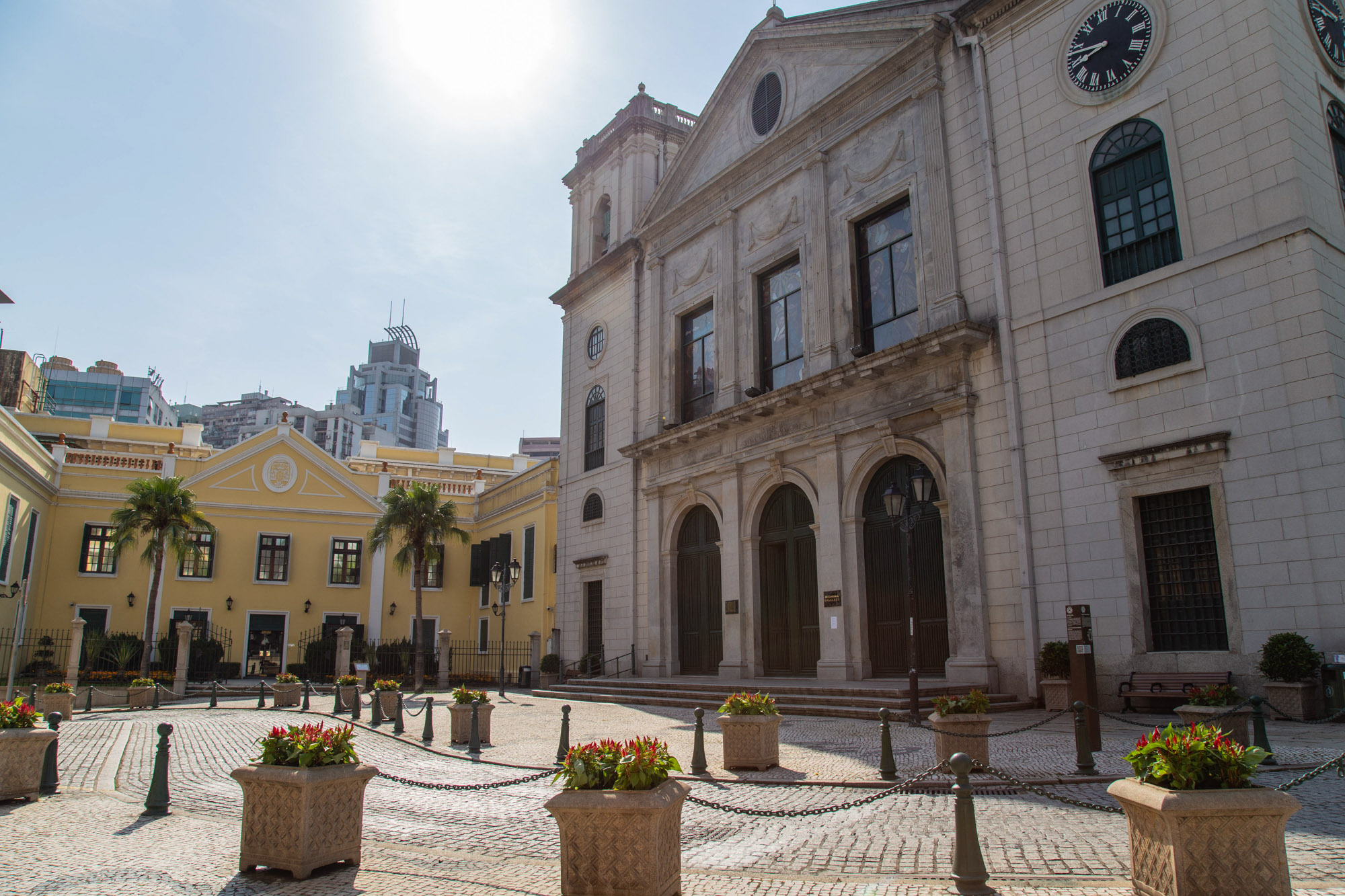
Macau Cathedral (Sé Catedral)
The Cathedral of the Nativity of Our Lady or Sé Cathedral–commonly known as Macau Cathedral–was rebuilt in concrete in 1937 but was already existent as a chapel way back in the 17th century. As of today, Sé Cathedral conducts the largest number of Catholic holy masses. It is also the Diocese of Macau’s headquarters and the main venue for special Catholic happenings such as Christmas mass, Easter events, and more.
Weekday Mass: 7:45am and 6:45pm (C), 6:00pm (P)
Saturday Anticipated Mass: 6:30pm (P)
Sunday Mass: 7:45am and 9:45am (C); 11:00am (P); 5:00pm and 6:30pm (E)
Bus routes nearby: 3, 3X, 4, 6A, 8A, 18A, 19, 26A, 33, N1A
Opening hours: 9:30am–6:00pm
Sé Cathedral 1 Largo da Sé, Macau, +853 2837 3643
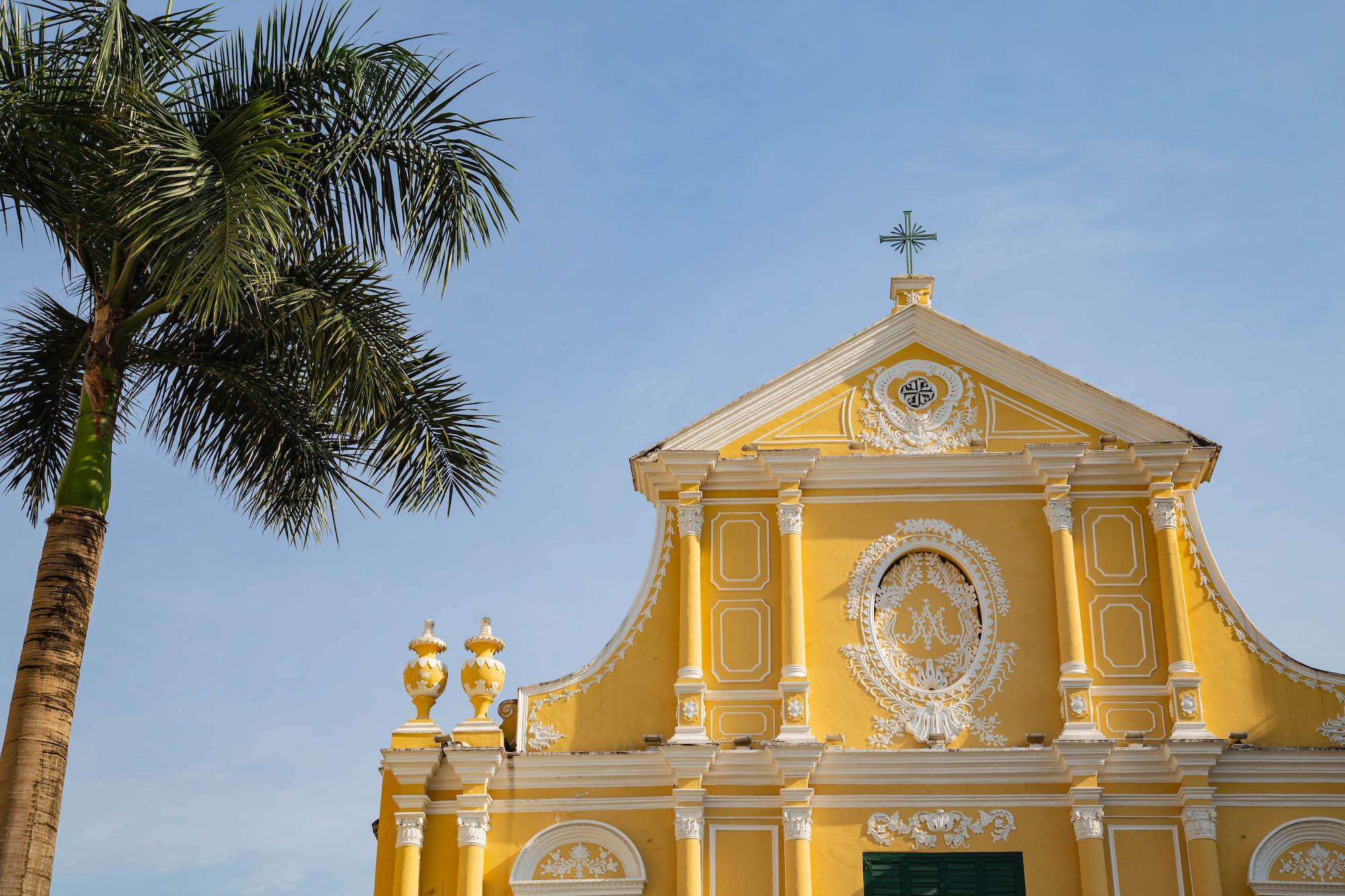
St. Dominic’s Church
The first Portuguese newspaper was published in St. Dominic’s Church on September 12, 1822. The church was founded and constructed during the 15th century by three Spanish Dominican priests for worshipping Our Lady of the Rosary. Having suffered a termites attack in the 90s, it took some years to rebuild the venue. Located right in the heart of Senado Square, the church was placed on the World Heritage List in 2005 and features a museum of sacred art (Treasure of Sacred Art) worth visiting.
Saturday Anticipated Mass: 5:30pm (P)
Bus routes nearby: 3, 3X, 4, 6A, 8A, 18A, 19, 26A, 33, N1A
Opening hours: 10:00am–6:00pm
St. Dominic’s Church St Dominic’s Square, Macau, +853 2836 7706
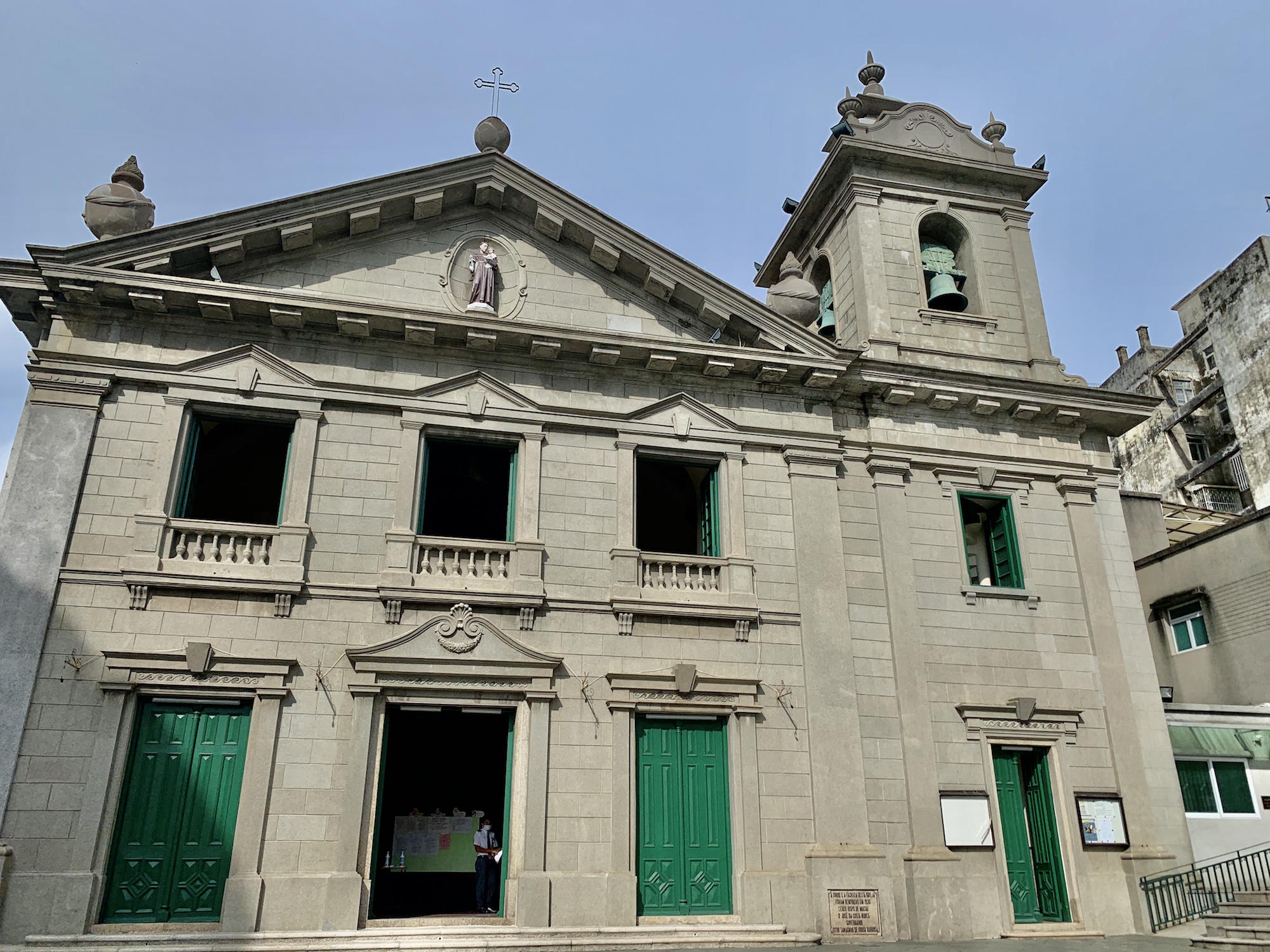
St. Anthony’s Church
The church used to hold weddings for members of the Portuguese community, giving rise to the church’s Chinese name Fa Vong Tong (Church of Flowers). It was built in 1560 and reconstructed several times until 1930. It is also where the Jesuits set up their earliest headquarters in the city. Located a minute away from Luís de Camões Garden, it’s interesting for those looking to know more about the history of these monuments. The courtyard is wide, allowing for cool photos as well.
Weekday Mass: Monday–Friday, 7:30am; Fridays, 7:00pm (C); Tuesdays, 5:30pm (P)
Anticipated Mass: 4:00pm (Korean)
Sunday Mass: 7:30am and 9:00pm (C), 11:00pm (P), 4:00pm (E)
Bus routes nearby: 17, 18
Opening hours: 9:00am–17:30pm
St. Anthony’s Church Santo António Square, Macau
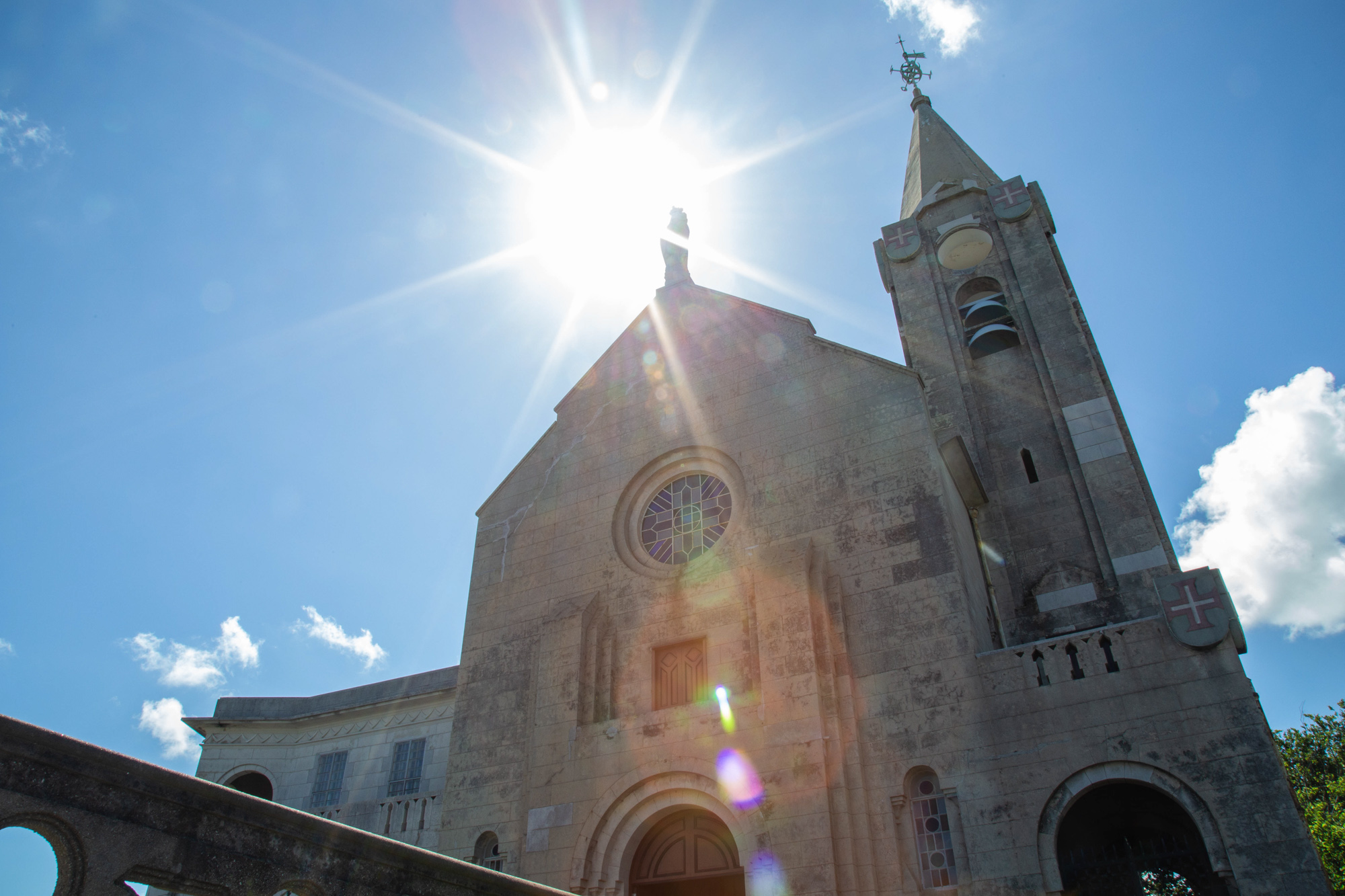
Chapel of Our Lady of Penha
Located on top of a hill with the same name, the Chapel of Our Lady of Penha boasts incredible 360º views over Macau. Built in 1622 by a group of Augustinian missionaries, the chapel sits 62.7 meters above sea level and it’s of Catholic descent. 1837 was the year the monument was revamped with a design similar to its present aspect.
Outside, one can visit and see a sculpture of Our Lady of Lourdes, supposed to protect sailors–fishing was one of Macau’s main activities until the 20th century. The sculpture is located behind the chapel and not in front of it: it’s facing the sea. The chapel is a great heritage piece worth visiting when it comes to knowing more about the Western and Catholic remains in Macau. You can also roam around the place to check out the views facing the Macau Tower, but also the nice gardens and plants nearby.
*This chapel isn’t holding masses at the moment*
Bus routes nearby: 9, 16
Chapel of Our Lady of Penha Avenida de Carlos da Maia, Largo do Carmo, Taipa, +853 2882 7566
Also read: Penha Hill: A Trace of the Augustinian Presence in Macau
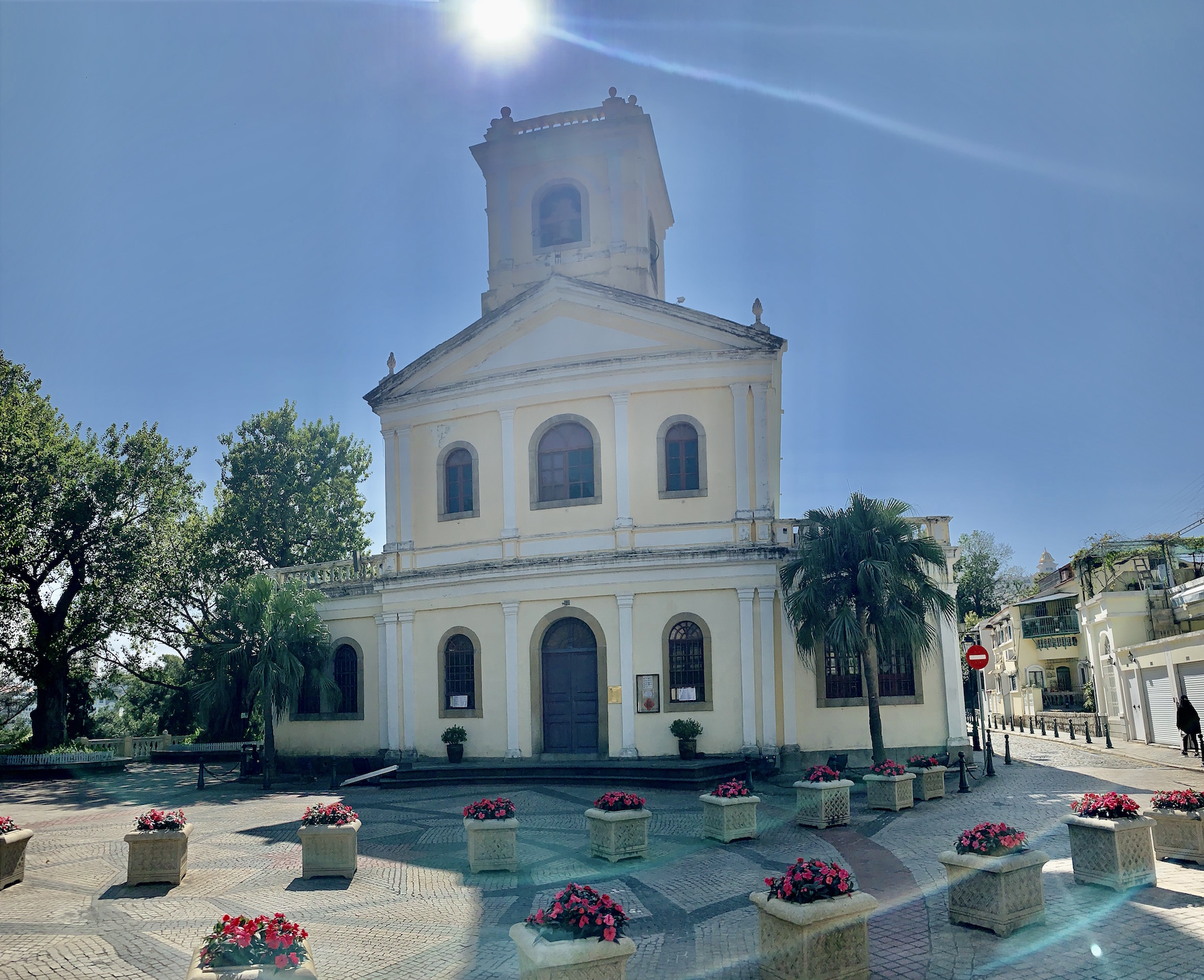
Our Lady of Carmel Church
Although only opened for praying and specific services–tourists aren’t allowed inside–this beautiful church holds frequent masses and it’s frequent by Catholics from all over Macau, as it’s big and sits in a quiet area. Lots of expats live in Taipa and this area specifically–Taipa Village–which makes this a popular church amongst believers. Known amongst locals as Carmo Church, it was built in 1885 at a time when Taipa was still an island and this area, a landfill. It’s now located close to the Taipa Houses-Museum and has a beautiful cross made of stone in the patio, from where one can Cotai and have a wide view of this area.
Weekday Mass: 7:30am (C), Tuesdays, 6:30pm (E)
Anticipated Mass: 6:30pm (C)
Sunday Masses: 8:45am (C), 10:00am (E) and 11:15am (P)
Bus routes nearby: 11, 21A, 22, 33, 26A
Opening hours: Daily, 10:0am–12:30pm and 2:00pm–6:00pm
Our Lady of Carmel Church Avenida de Carlos da Maia, Largo do Carmo, Taipa, +853 2882 7566

St. Lawrence Church
This neoclassical church with a touch of baroque elements is located in what once was one of Macau’s richest neighborhoods. During the 17th, 18th, and 19th centuries, it was inhabited by the noble class of Portuguese, hence the enriched architecture details. It’s also one of the three oldest churches in town, built by the Jesuits in the mid-16h century. Its present look comes from a revitalization project from 1846.
The families of fishermen at sea would gather at the monument’s stairway and wait for them. It frequently holds masses and it’s a popular praying venue for everyone living in the area, mainly made of locals and Filipinos. The grand stairway prompts couples to take pre-wedding photos there.
Weekday Mass: 7:30am (C)
Anticipated Mass: 7:30pm (E)
Sunday Mass: 7:30am, 9:00am and 4:00pm (C), 7:30pm (E)
Bus routes nearby: 9, 16, 18, 18A
Opening hours: Daily, 5:30am–11:30pm
St. Lawrence Church Rua de São Lourenço, Macau, +853 2857 3760
Also read: 7 Unique Parishes in Macau
Also read: Best Local Low-Cost Eats in St. Lawrence District
Also read: Explore Heritage and Architecture in São Lourenço
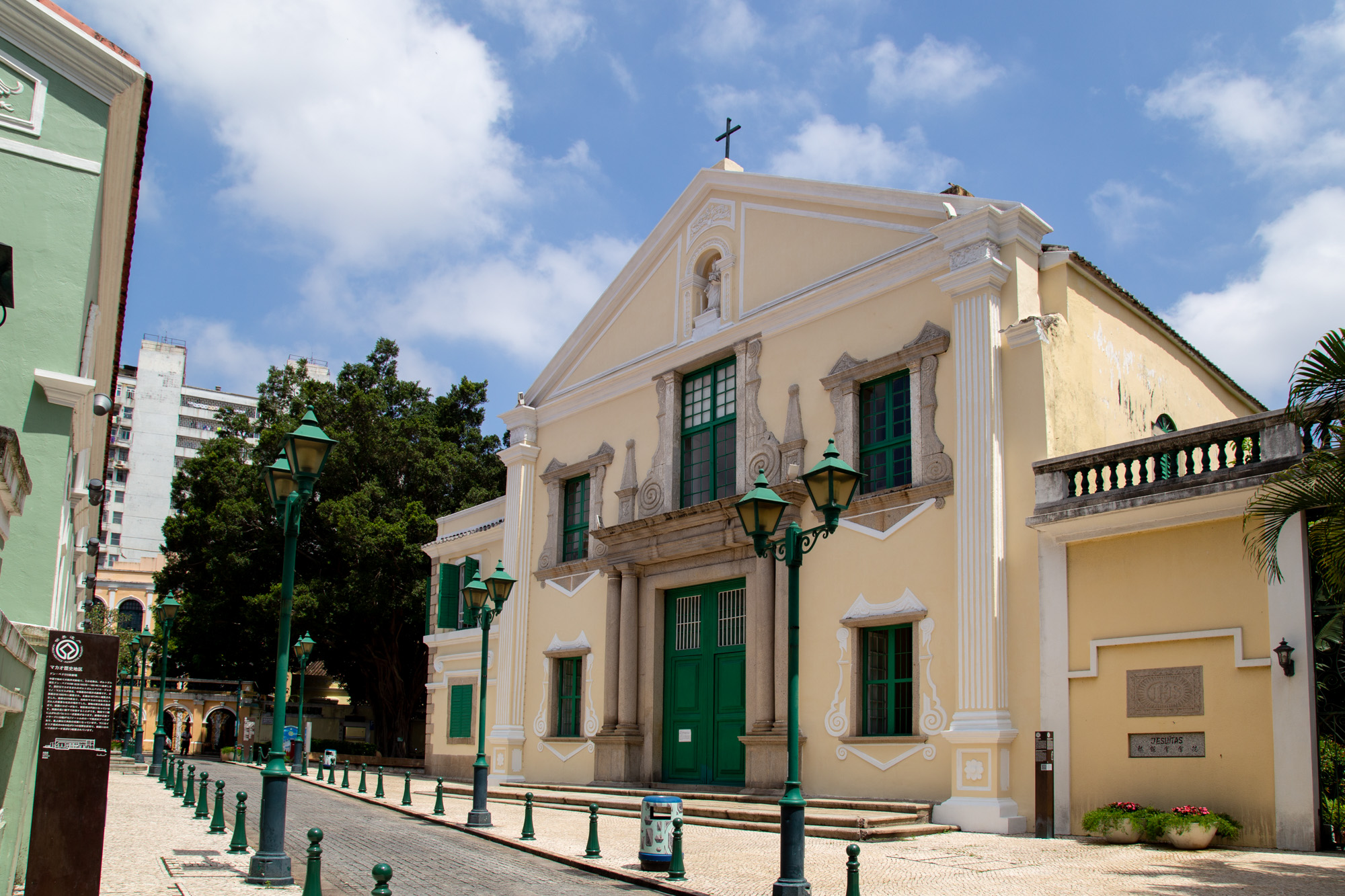
St. Augustine’s Church
With a history dating back to 1591, this is a majestic architecture project of Western descent. Built by Spanish Augustinian priests, it’s painted in the traditional pastel yellow and it’s located in front of Dom Pedro V Theatre. Sitting in a traditional and cute Macau neighborhood, it frequently hosts masses for believers to attend. There used to be a convent inside as well before the first Portuguese school was created: this was where the Portuguese living in Macau would have their kids. St. Augustine’s Church’s interior is wide.
Interesting fact: before, priests would reinforce the rooftop with palm tree leaves to prevent the rain to ruin the interior, which, with the wind, seemed like a dragon’s mustache moving. For that reason, locals nicknamed it Long Sou Miu (Temple of the Dragon with a Big Mustache).
Weekday Mass: 7:30pm (E)
Anticipated Mass: 7:30pm (E)
Sunday Mass: 9:30am, 11:00am, 4:30pm and 6:30 (E)
Bus routes nearby: 9, 16, 18, 18A
Opening hours: Daily, 10:00am–6:00pm
St. Augustine’s Church 2 Largo de Santo Agostinho, Macau, +853 2836 6866, www.culturalheritage.mo
Also read: A Guide to St. Augustine’s Square
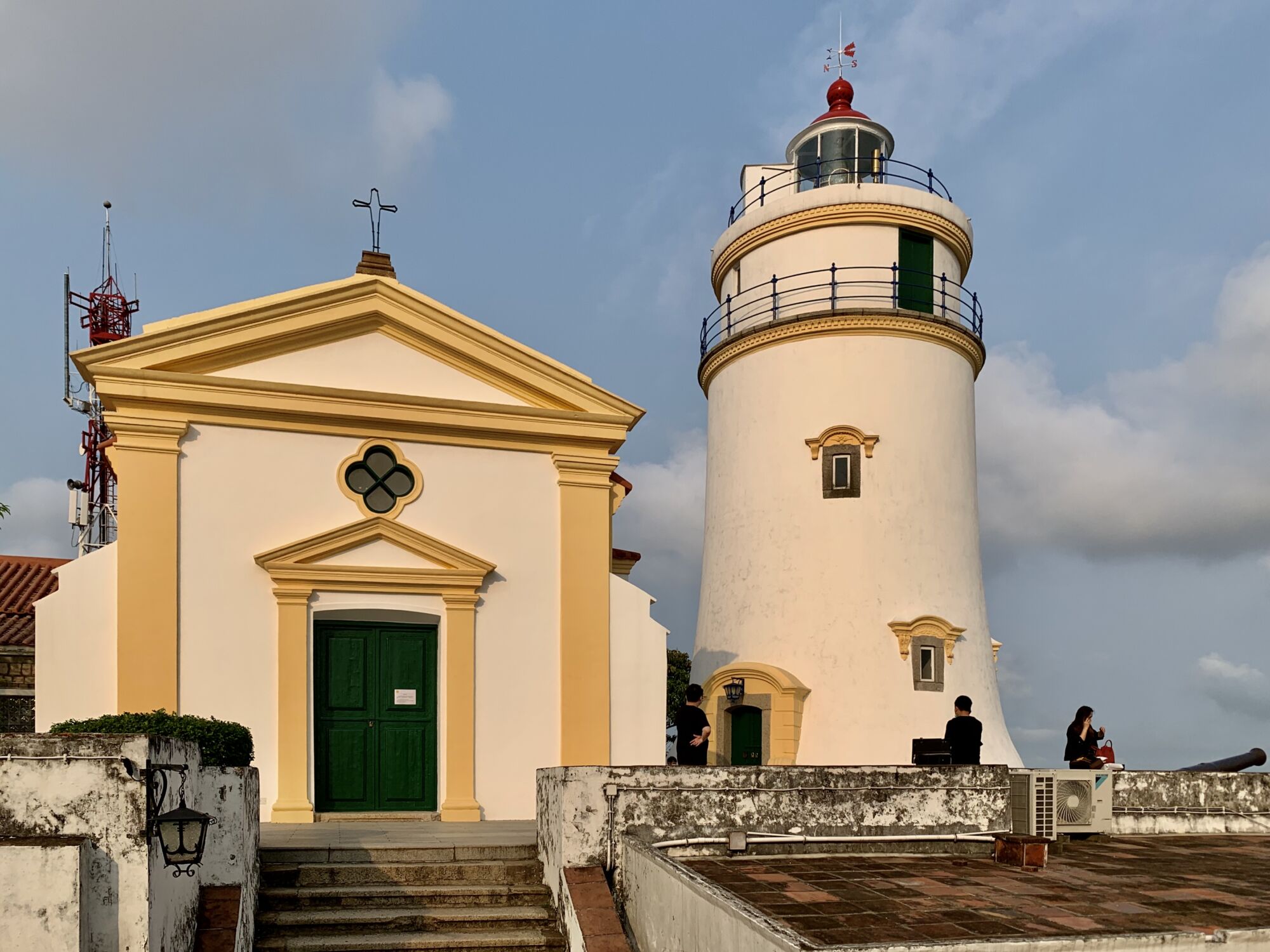
Chapel of Our Lady of Guia
Situated on top of Guia Hill, this little chapel was recently revamped and features typical colors white and yellow with a green door. It’s believed to have been built in 1622–the lighthouse was only erected in 1864–to house Clare nuns before they moved to St. Clare Convent. Local tales say Virgin Mary appeared in this location at the time of the Dutch Invasion (1622), came out of the chapel, and laid a mantel that protected the area from enemy fire.
Some missionaries from the 17th century are buried there. In 1998, a restoration uncovered several old paintworks on the walls that have been covered with lime for almost two centuries! These paintings portray biblical and historical passages, but one can also spot bonsais and bats, lions made of stones, and other elements of Chinese culture. This is the only church in the South of China with these decorative items in its interior, thus representing Macau’s multicultural side.
*This chapel doesn’t host masses*
Opening hours: Daily, 10:00am–5:00pm
Chapel of Our Lady of Guia Guia Hill, Macau
Also read: Guia Hill: An Urban UNESCO Heritage Spot & Hiking Haven
This article was originally written by Mika Callejo in 2017 and updated by Leonor Sá Machado in January 2021.



































